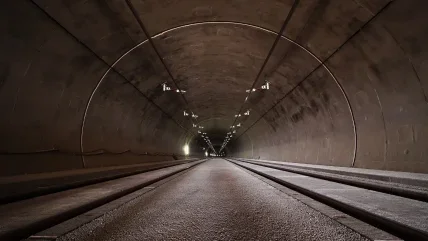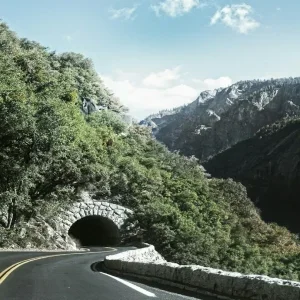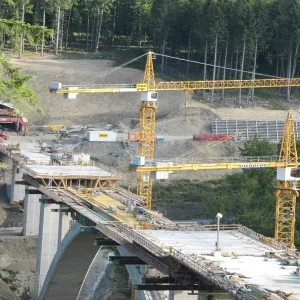
In the intricate network of societal dynamics, Polarisation has become a pervasive force, seeping into unexpected realms. Even within the seemingly technical confines of the tunnelling industry, the fissures of societal division make their presence known. This article delves deep into the intersection of societal polarisation and the tunnelling sector, exploring its manifestations, impacts, and potential pathways toward cohesion.
The Landscape of Societal Polarisation
Societal Polarisation, characterised by the widening ideological gaps and entrenched divisions within communities, has become a defining feature of contemporary discourse. Political affiliations, cultural identities, and socioeconomic disparities all contribute to the fractured landscape. In the context of the tunnelling industry, these divisions manifest in various ways, shaping perspectives on infrastructure projects, environmental concerns, and resource allocation.
The Tunnelling Industry: A Nexus of Divergent Interests
Within the vast expanse of the tunnelling industry, a multitude of stakeholders converge, each with their own distinct interests, objectives, and priorities. From engineers and project managers to environmentalists and community activists, the ecosystem of players forms a complex web of relationships, often characterised by competing agendas and divergent viewpoints.
At the heart of this nexus lies the tension between progress and preservation, as industry professionals strive to balance the imperatives of infrastructure development with the imperative to protect the environment and respect local communities. Engineers and construction firms, driven by the demands of progress and economic growth, seek to innovate and push the boundaries of technology to construct tunnels that are safer, more efficient, and more cost-effective. Their focus is on maximising efficiency, minimising construction time, and optimizing resource utilisation to deliver projects on time and within budget.
However, alongside these aspirations for progress, environmentalists and conservationists raise concerns about the ecological impact of tunnelling projects. They advocate for the preservation of natural habitats, the mitigation of environmental damage, and the adoption of sustainable construction practices. For them, tunnels are not just engineering feats but interventions with potentially far-reaching consequences for ecosystems and biodiversity. Their advocacy often brings them into conflict with industry stakeholders, as they seek to hold developers accountable for the ecological footprint of their projects.
Local communities, too, play a crucial role in shaping the landscape of the tunnelling industry. Residents living in proximity to proposed tunnel sites may have concerns about noise pollution, air quality, and disruptions to their daily lives during construction. They may fear the loss of green spaces, the displacement of wildlife, or the potential risks associated with tunnelling activities. Their voices, grounded in lived experiences and local knowledge, demand to be heard in the decision-making processes that affect their neighbourhoods and livelihoods.
In addition to these primary stakeholders, government agencies, regulatory bodies, and financial institutions also exert influence over the trajectory of tunnelling projects. They set standards, allocate resources, and provide permits and approvals, shaping the legal and regulatory framework within which the industry operates. Their policies and decisions can have profound implications for project feasibility, funding availability, and overall project outcomes.
Navigating this complex network of divergent interests requires a delicate balance of diplomacy, collaboration, and compromise. Industry professionals must engage in proactive stakeholder management, seeking to understand and address the concerns of all parties involved. They must embrace principles of sustainability and corporate social responsibility, integrating environmental and social considerations into project planning and execution. They must also advocate for transparent and inclusive decision-making processes, ensuring that all stakeholders have a voice in shaping the future of the industry.
Ultimately, the tunnelling industry stands at a crossroads, poised to chart a course towards a more sustainable and inclusive future. By recognising the interconnectedness of economic, environmental, and social concerns, stakeholders can work together to overcome Polarisation and forge a path towards collective prosperity. In doing so, they can transform the tunnelling industry from a nexus of divergent interests into a catalyst for positive change, leaving a legacy of innovation, resilience, and stewardship for generations to come.
Environmental Concerns and Community Resistance
In the intricate dance of progress and preservation, the tunnelling industry often finds itself at odds with environmental concerns and community resistance. This dynamic interplay, rooted in the competing priorities of development and conservation, shapes the trajectory of infrastructure projects and underscores the need for nuanced approaches to sustainable urbanisation.
Tunnelling, while essential for expanding transportation networks, water supply systems, and underground utilities, inevitably leaves an imprint on the natural world. The excavation process can disrupt delicate ecosystems, fragment habitats, and disturb ecological balances. Furthermore, the release of pollutants, such as sediment runoff and construction noise, can degrade water and air quality, posing risks to aquatic and terrestrial life.
Environmental advocates raise alarm about these impacts, urging developers to adopt stringent mitigation measures and adhere to best practices in environmental stewardship. They call for comprehensive environmental impact assessments (EIAs) to evaluate the potential consequences of tunnelling projects on biodiversity, water resources, and air quality. Through advocacy and legal action, they seek to ensure that developers comply with environmental regulations and uphold their responsibility to safeguard the planet for future generations.
In addition to ecological considerations, tunnelling projects intersect with the human landscape, triggering concerns about property rights, public health, and quality of life. Residents living near proposed tunnel sites may fear disruptions to their neighbourhoods, including increased noise levels, traffic congestion, and property devaluation. They may also worry about the safety risks associated with tunnelling activities, such as ground subsidence or tunnel collapses.
Community resistance often emerges as a response to these perceived threats, as residents mobilise to protect their homes, businesses, and way of life. Grassroots organisations, neighbourhood associations, and advocacy groups become vocal champions for community interests, advocating for greater transparency, public participation, and accountability in the decision-making process. Their efforts to hold developers and government agencies accountable for addressing community concerns shape the discourse around tunnelling projects and influence the outcomes of regulatory reviews and permitting processes.
In the face of environmental concerns and community resistance, the tunnelling industry must navigate a delicate balancing act, striving to reconcile competing interests and forge paths to collaboration. Engaging in meaningful dialogue with environmentalists, community leaders, and other stakeholders is essential to building trust, fostering understanding, and finding common ground.
This process requires a commitment to transparency, inclusivity, and responsiveness on the part of developers and government agencies. It entails listening to the concerns of affected communities, incorporating their feedback into project designs, and identifying win-win solutions that balance the needs of development with the imperative of environmental and social responsibility.
By embracing a collaborative approach to infrastructure planning and decision-making, the tunnelling industry can transcend Polarisation and foster a culture of shared stewardship. Together, stakeholders can chart a course towards sustainable urbanization, where infrastructure development respects the integrity of ecosystems, enhances the resilience of communities, and nurtures a harmonious relationship between humanity and the natural world.
Bridging Divides through Dialogue and Engagement
Despite the entrenched nature of societal Polarisation, avenues for reconciliation and collaboration exist within the tunnelling industry. By fostering open dialogue and meaningful engagement, stakeholders can bridge divides and find common ground. Embracing principles of transparency, inclusivity, and shared decision-making can help build trust and foster a sense of collective ownership over infrastructure projects.
Leveraging Technology for Social Impact
Advancements in technology offer promising avenues for addressing societal Polarisation within the tunnelling industry. From virtual reality simulations to community engagement platforms, innovative tools can facilitate stakeholder communication, visualize project impacts, and solicit feedback in real-time. By harnessing the power of technology, industry stakeholders can cultivate a more participatory and inclusive approach to infrastructure development.
Investing in Social Infrastructure
Beyond the physical structures of tunnels and bridges, the concept of social infrastructure emerges as a critical component of sustainable development. Investing in education, healthcare, and community empowerment initiatives can help address underlying drivers of societal Polarisation, fostering social cohesion and resilience. By integrating social considerations into infrastructure planning and investment strategies, the tunnelling industry can contribute to broader efforts aimed at building more equitable and inclusive societies.
Conclusion
In the labyrinthine world of the tunnelling industry, societal polarisation presents both a challenge and an opportunity. By acknowledging the complexities of divergent interests and perspectives, stakeholders can work towards collective solutions that balance economic, environmental, and social priorities. Through dialogue, engagement, and innovation, the industry can transcend polarisation and pave the way for a more sustainable and inclusive future.







